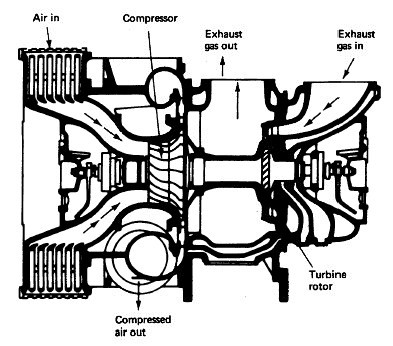
Gas Exchanger for Marine Internal Combustion Engine
A basic part of the cycle of an internal combustion engine is the supply
of fresh air and removal of exhaust gases. This is the gas exchange
process. Scavenging is the removal of exhaust gases by blowing in fresh
air.
Charging is the filling of the engine cylinder with a supply or charge of fresh air ready for compression. With supercharging a large mass of air is supplied to the cylinder by blowing it in under pressure. Older engines were 'naturally aspirated'—taking fresh air only at atmospheric pressure. Modern engines make use of exhaust gas driven turbochargers to supply pressurised fresh air for scavenging and supercharging. Both four-stroke and two-stroke cycle engines may be pressure charged.
Charging is the filling of the engine cylinder with a supply or charge of fresh air ready for compression. With supercharging a large mass of air is supplied to the cylinder by blowing it in under pressure. Older engines were 'naturally aspirated'—taking fresh air only at atmospheric pressure. Modern engines make use of exhaust gas driven turbochargers to supply pressurised fresh air for scavenging and supercharging. Both four-stroke and two-stroke cycle engines may be pressure charged.



